If you have body clipped your horse, keep in mind that you have removed his only protection against cold temperatures, wind and rain. He needs his winter coat, or something in place of it, to protect him from harsh winter elements. You must be prepared to blanket your horse on a regular basis if he is clipped. A good rule of thumb is to use 55 degrees Fahrenheit as your “blanket” temperature. Day or night, if the temperature is below 55 degrees, then your horse should be blanketed. If temperatures regularly drop below freezing, then you should also provide a hood and possibly a second blanket. And if it is raining, then keep your body clipped horse indoors or in a sheltered area.
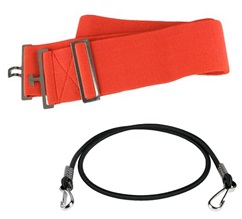
The type of blanket you choose is important. Select a blanket that will provide enough warmth, is comfortable for your horse and won’t rub, shift or, worse, come off your horse. The safest style of blanket is one that has rear leg straps. These straps prevent the blanket from shifting when your horse lies down or rolls.
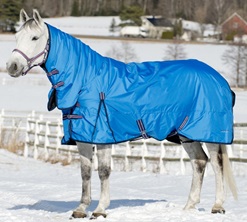
If your horse lives outside, then a turnout-style blanket is a must. Select one that will withstand the rigors of outdoor life, including running, bucking, rolling and playing with other horses. It should be water-resistant or, even better, waterproof. Never leave your clipped horse, or any horse, for that matter, outside in the rain wearing a blanket that is not waterproof. Also, do not turn your horse out in a paddock or pasture while wearing a hood. Hoods are recommended for stall use only for safety reasons.
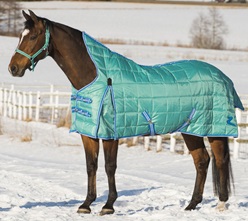
If your horse lives in a stall, then you have more options regarding blanket selection. You want to select one that will keep him warm, depending on the temperature in the barn. In colder climates, you may want to use one blanket during the day and add a second one at night when the temperature drops.
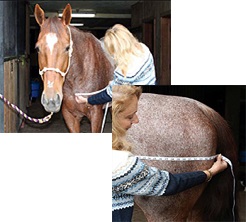
Blankets are sized according to your horse’s measurement from the center of his chest along his side to the point of his hip. The neck of the blanket should rest well above the shoulders and withers. If the blanket wants to shift back behind the withers, then it is too big for you horse. It should also close snugly and securely at the chest.
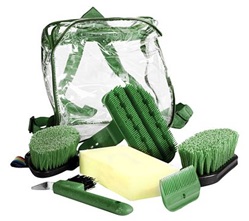
It is important to keep your horse clean if he is blanketed. Never blanket your horse without first thoroughly grooming him. If he has dust, dirt and/ or dander on his body and you cover him with the blanket, he will be uncomfortable and itchy, and will likely rub, scratch himself and roll. You should also keep the blanket clean and in good condition.
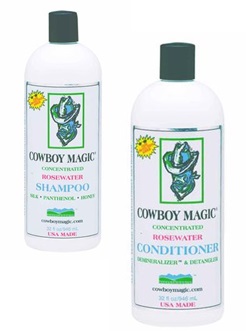
Horses that are clipped often suffer from dry skin, it is important to use high-quality, moisturizing grooming products. Don’t use products that will strip the skin of its natural oils. Cowboy Magic® Rosewater Shampoo contains silk conditioners and panthenol that nourish and moisturize the skin and hair. Cowboy Magic® Rosewater Conditioner can be used straight out of the bottle or diluted at a ratio of 20 parts water to one part conditioner for an all-over body rinse. As it is massaged into the hair (even short, clipped hair), it loosens and dissolves any mineral and chemical buildup. It also contains silk proteins and panthenol, which penetrate the hair and skin. Keeping your horse’s coat and skin moisturized will also help reduce winter static electricity.
One advantage to having your horse fully body clipped is that you can bathe, rinse and/or sponge him down regularly and he will dry quickly. Use warm water if possible, and never use ice-cold water. After bathing, whisk away as much water as possible, and then towel your horse dry. You can stand him in the sun to fully dry if it is warm enough, or put a cooler on him to wick away the moisture and keep him from getting chilled while he dries.
There is a right way and a wrong way to put a blanket on and take it off your horse. Anyone who has suffered the consequences of doing it incorrectly will tell you this is true. As a rule of thumb, blankets should be put on from front to back and taken off from back to front.
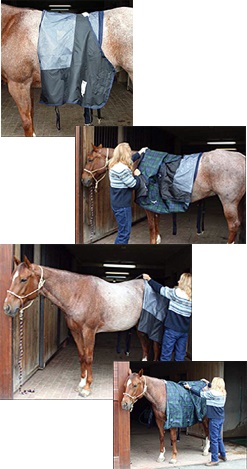
1. To put a blanket on your horse, fold the blanket in thirds by folding the back half of the blanket toward the middle first and then the front half of the blank toward the middle. Lay the folded blanket over the middle of the horse’s back and unfold it.
2. Secure the buckles beginning at the chest, then the belly and then the leg straps.
3. The straps should be loose enough so they do not bind your horse, but tight enough that your horse can’t get a foot caught in them if he lies down.
4. Crossing the rear leg straps is optional. However, crossing the straps keeps the blanket centered on the horse as he moves.
5. To take the blanket off, unbuckle the rear leg straps first, then the belly straps, then the chest buckles.
6. Fold the front half of the blanket back to the middle and slide the blanket toward the horse’s hind quarters.